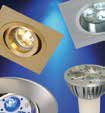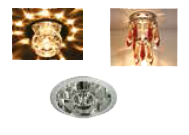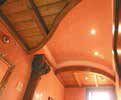|
|
Why use a spotlight box? |
|
||||||||||||||
|
|
||||||||||||||||
| But why have built-in spotlights? | ||||||||||||||||
| Illuminating the rooms of your home with built-in led spotlights is a new way of seeing interior design, with original lighting effects. It's a way of getting the light where you want it, spreading warmth and beauty to alI the objects it plays on. Spotlights fitted give you the closest alternative to sunlight. By directing the lamp as you want you will get the right distribution, while each spotlight will reach out gently to every corner of the room but would not blind you in the process, a problem of traditional lighting. | ||||||||||||||||
|
||||||||||||||||
| Old halogen lights have practically been abandoned for the latest led spotlights, now an economic reality. We now need to further disperse these light sources, because the light power from each light point is smaller than that of the previously used halogen lights. It is always interesting to assess room lighting with built-in led spotlights and it is equally interesting to also install them where false ceilings are not always present or available, which have been facilitating (even if not correctly) the installation of spotlights for years. | ||||||||||||||||
|
In fact, spotlights have almost always been installed in shops or public premises where a false ceiling is normally used, but the latter is not always possible and anyway, also installing spotlights in residential buildings is highly appreciated by the end customer. There has never been a rational method to install spotlights in walls, now there is and you can truly use it in many new ways. Our work system is still little known but the problem of spotlight installation is more widespread than thought. In any case, knowing the method gives greater use possibilities and also provides a solutionmto new led spotlight problems that manufacturers still don't take into consideration. In many cases, the client or the designer consulting the manufacturer's lighting catalogue, or visit a lighting exhibition, DOES NOT UNDERSTAND IT IS POSSIBLE TO INSTALL SPOTLIGHTS WITHOUT A FALSE CEILING. Even if there are formworks in certain catalogues (but rarely technical images illustrating use), the mental connection is often not made that the spotlight inside the formwork permits assembly in a masonry ceiling; therefore the possibility is offered to the client to choose the products displayed in the catalogue, which would have been otherwise discarded. Example: the end customer consulting the catalogue could decide to install built-in spotlights in the bathroom or in a corridor since they see technical images of the formworks in the middle of unfinished walls, understanding that the spotlights he is looking at in that catalogue or in this lighting display include an installation method without use of plasterboard; and therefore a certain number of spotlights and a certain number of support boxes could be purchased. Similarly, a planner could favour the description of a light compared to an another because the same catalogue has the installation method in reinforced cement as planned on that building site. |
||||||||||||||||
|
|
|
|||||||||||||||




















